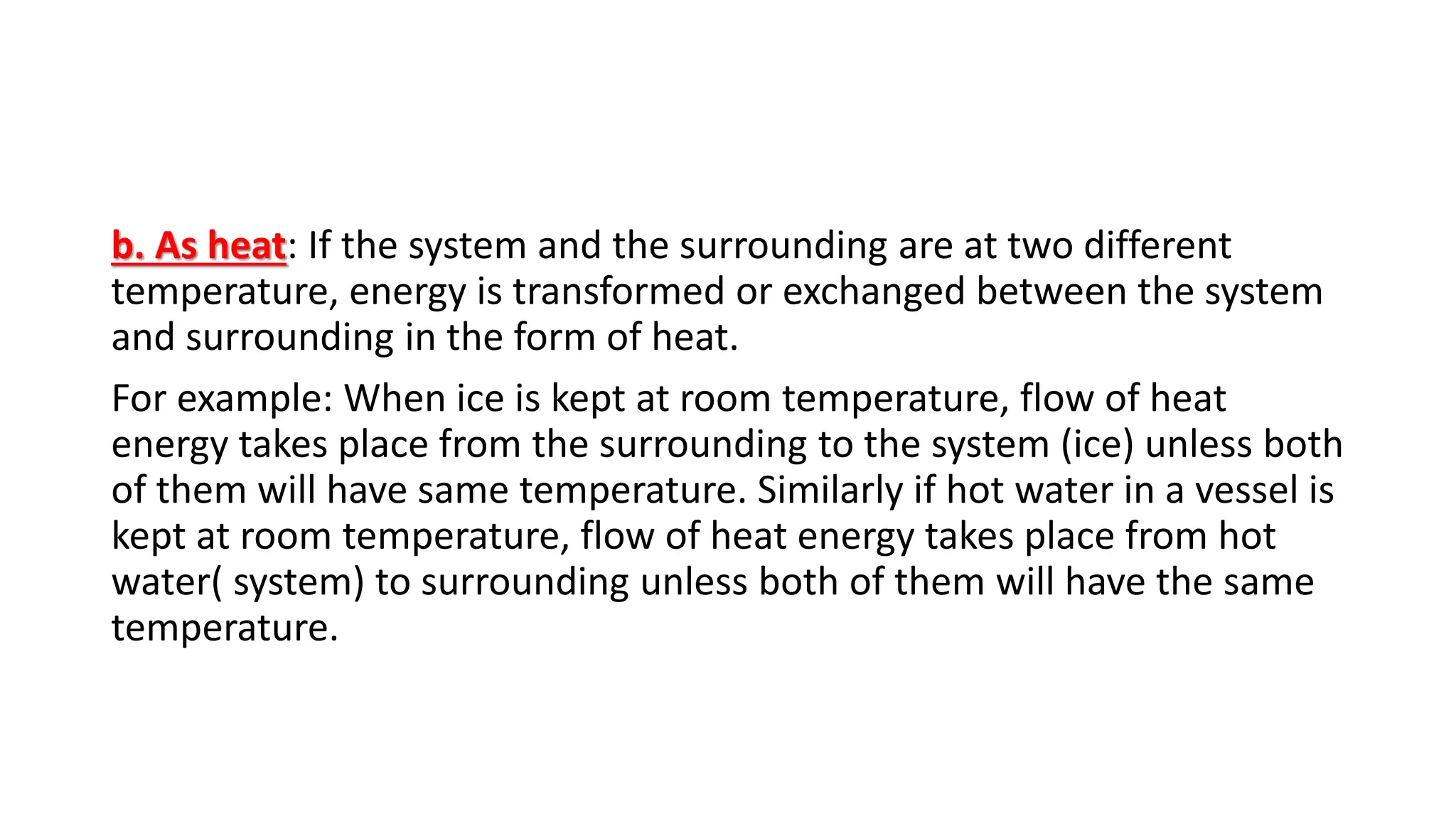This document discusses key concepts in chemical thermodynamics including:
- Thermodynamics deals with different forms of energy and quantitative relationships between them. Chemical thermodynamics focuses on chemical changes.
- Systems, surroundings, boundaries, closed/open/isolated systems, and state functions like internal energy are defined.
- The first law of thermodynamics states that energy is conserved and can be converted between different forms like work and heat but not created or destroyed.


















